Instruction
How to hit your irons like Sepp Straka
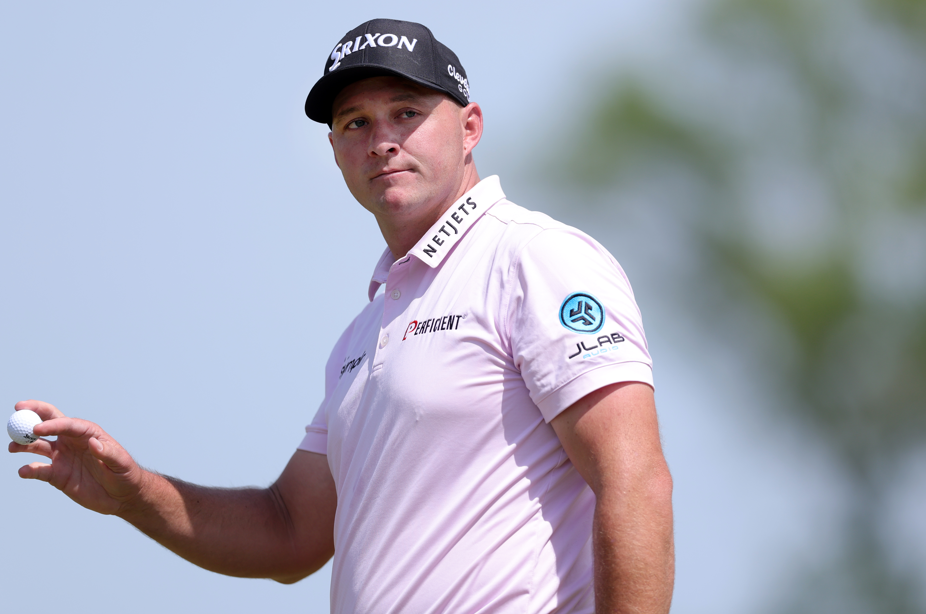
Today, I want to talk about Sepp Straka – a guy who was not a regular headline grabber before this past weekend when he captured his second win of the season. Despite that, those paying attention can tell you that Straka’s iron play has been worthy of notoriety on a larger scale for quite some time.
Straka consistently ranks in the top 10 in Strokes Gained: Approach and Greens in Regulation. That’s no accident. His iron game is a masterclass in precision and consistency. So what can the average golfer learn from watching Straka work his magic with the irons? Let me break it down for you.
Tip #1: Consistency Trumps Perfection
One thing that jumps out when you watch Straka is his commitment to consistency. He’s not trying to hit the perfect shot every time – he’s trying to hit the same shot repeatedly. This mindset shift is huge.
I see it all the time with my students. They’re chasing that one perfect 7-iron they hit on the range last week, rather than developing a repeatable motion they can count on under pressure. Straka understands that golf isn’t about perfection – it’s about reliability.
Even when his game isn’t firing on all cylinders, Straka sticks to his process. He doesn’t abandon ship at the first sign of trouble. This steadiness is something we can all incorporate, regardless of handicap. Focus on building a swing you can repeat rather than a swing that occasionally produces miraculous results.

Tip #2: Embrace Mid-Round Adjustments
At the Truist Championship, Straka made a swing change mid-tournament. Think about that for a second. Most amateurs are terrified to tinker with their swing during a casual round with buddies, let alone in the heat of competition.
But here’s the thing – Straka knows his swing well enough to make intelligent adjustments on the fly. He’s not making wholesale changes; he’s making small tweaks based on what the course is demanding and how his body is responding that day.
Next time you’re struggling, instead of just accepting a bad day, ask yourself: “What small adjustment might help right now?” Maybe it’s playing the ball slightly back in your stance, or softening your grip pressure. Being adaptable, like Straka, can save many rounds from disaster.
Tip #3: Quality Practice Beats Quantity
When I talk with my students about practice, I often reference pros like Straka who emphasize focused, purposeful practice. Straka doesn’t just beat balls mindlessly – he practices with intention.
Try this approach: Rather than hitting 100 range balls without a clear goal, hit 30 balls with complete focus on one specific aspect of your iron play. Maybe it’s starting your downswing with your lower body, or maintaining your spine angle through impact. Whatever it is, give it your full attention.
This quality-over-quantity mindset will yield far better results than marathon range sessions where your mind wanders after the first dozen swings.
Tip #4: Trust Your Preparation
One of the most underrated aspects of Straka’s approach is his trust in his preparation. Once he’s on the course, he commits fully to each shot. There’s no second-guessing or hesitation.
I see amateurs do this all the time – they make a decision, then doubt themselves over the ball. That split-second of uncertainty is often enough to derail the entire shot.
Make your decisions behind the ball, then step in with complete commitment. Trust that the work you’ve put in during practice is enough. This confidence alone can shave strokes off your game.
The Straka Rhythm Drill
Here’s a simple drill inspired by Straka’s smooth tempo that you can use to improve your iron play:
Take three clubs – say, a 5-iron, 7-iron, and 9-iron. Without a ball, make smooth, rhythmic swings with each club, focusing on maintaining the same tempo regardless of club length. Start with five swings with each club, then progress to hitting actual balls while maintaining that same rhythm.
The goal isn’t distance; it’s consistency of tempo. Straka’s iron success comes partly from his ability to maintain the same rhythm throughout his bag. This drill helps ingrain that feeling.
After 20+ years of teaching, I’ve found that the simplest adjustments often yield the biggest improvements. Straka’s approach to iron play embodies this philosophy perfectly – it’s not about reinventing the wheel, but rather about executing the fundamentals with unwavering consistency.
Take these tips to the range, then to the course, and I guarantee you’ll see improvement in your iron game. And next time you catch Straka on TV, pay close attention – there’s always something new to learn from one of the TOUR’s best iron players.
PGA Professional Brendon Elliott is an award-winning coach and golf writer. You can check out his writing work and learn more about him by visiting BEAGOLFER.golf and OneMoreRollGolf.com. Also, check out “The Starter” on RG.org each Monday.
Editor’s note: Brendon shares his nearly 30 years of experience in the game with GolfWRX readers through his ongoing tip series. He looks forward to providing valuable insights and advice to help golfers improve their game. Stay tuned for more Tuesday Tips!
Instruction
The Wedge Guy: Beating the yips into submission

There may be no more painful affliction in golf than the “yips” – those uncontrollable and maddening little nervous twitches that prevent you from making a decent stroke on short putts. If you’ve never had them, consider yourself very fortunate (or possibly just very young). But I can assure you that when your most treacherous and feared golf shot is not the 195 yard approach over water with a quartering headwind…not the extra tight fairway with water left and sand right…not the soft bunker shot to a downhill pin with water on the other side…No, when your most feared shot is the remaining 2- 4-foot putt after hitting a great approach, recovery or lag putt, it makes the game almost painful.
And I’ve been fighting the yips (again) for a while now. It’s a recurring nightmare that has haunted me most of my adult life. I even had the yips when I was in my 20s, but I’ve beat them into submission off and on most of my adult life. But just recently, that nasty virus came to life once again. My lag putting has been very good, but when I get over one of those “you should make this” length putts, the entire nervous system seems to go haywire. I make great practice strokes, and then the most pitiful short-stroke or jab at the ball you can imagine. Sheesh.
But I’m a traditionalist, and do not look toward the long putter, belly putter, cross-hand, claw or other variation as the solution. My approach is to beat those damn yips into submission some other way. Here’s what I’m doing that is working pretty well, and I offer it to all of you who might have a similar affliction on the greens.
When you are over a short putt, forget the practice strokes…you want your natural eye-hand coordination to be unhindered by mechanics. Address your putt and take a good look at the hole, and back to the putter to ensure good alignment. Lighten your right hand grip on the putter and make sure that only the fingertips are in contact with the grip, to prevent you from getting to tight.
Then, take a long, long look at the hole to fill your entire mind and senses with the target. When you bring your head/eyes back to the ball, try to make a smooth, immediate move right into your backstroke — not even a second pause — and then let your hands and putter track right back together right back to where you were looking — the HOLE! Seeing the putter make contact with the ball, preferably even the forward edge of the ball – the side near the hole.
For me, this is working, but I am asking all of you to chime in with your own “home remedies” for the most aggravating and senseless of all golf maladies. It never hurts to have more to fall back on!
Instruction
Looking for a good golf instructor? Use this checklist

Over the last couple of decades, golf has become much more science-based. We measure swing speed, smash factor, angle of attack, strokes gained, and many other metrics that can really help golfers improve. But I often wonder if the advancement of golf’s “hard” sciences comes at the expense of the “soft” sciences.
Take, for example, golf instruction. Good golf instruction requires understanding swing mechanics and ball flight. But let’s take that as a given for PGA instructors. The other factors that make an instructor effective can be evaluated by social science, rather than launch monitors.
If you are a recreational golfer looking for a golf instructor, here are my top three points to consider.
1. Cultural mindset
What is “cultural mindset? To social scientists, it means whether a culture of genius or a culture of learning exists. In a golf instruction context, that may mean whether the teacher communicates a message that golf ability is something innate (you either have it or you don’t), or whether golf ability is something that can be learned. You want the latter!
It may sound obvious to suggest that you find a golf instructor who thinks you can improve, but my research suggests that it isn’t a given. In a large sample study of golf instructors, I found that when it came to recreational golfers, there was a wide range of belief systems. Some instructors strongly believed recreational golfers could improve through lessons. while others strongly believed they could not. And those beliefs manifested in the instructor’s feedback given to a student and the culture created for players.
2. Coping and self-modeling can beat role-modeling
Swing analysis technology is often preloaded with swings of PGA and LPGA Tour players. The swings of elite players are intended to be used for comparative purposes with golfers taking lessons. What social science tells us is that for novice and non-expert golfers, comparing swings to tour professionals can have the opposite effect of that intended. If you fit into the novice or non-expert category of golfer, you will learn more and be more motivated to change if you see yourself making a ‘better’ swing (self-modeling) or seeing your swing compared to a similar other (a coping model). Stay away from instructors who want to compare your swing with that of a tour player.
3. Learning theory basics
It is not a sexy selling point, but learning is a process, and that process is incremental – particularly for recreational adult players. Social science helps us understand this element of golf instruction. A good instructor will take learning slowly. He or she will give you just about enough information that challenges you, but is still manageable. The artful instructor will take time to decide what that one or two learning points are before jumping in to make full-scale swing changes. If the instructor moves too fast, you will probably leave the lesson with an arm’s length of swing thoughts and not really know which to focus on.
As an instructor, I develop a priority list of changes I want to make in a player’s technique. We then patiently and gradually work through that list. Beware of instructors who give you more than you can chew.
So if you are in the market for golf instruction, I encourage you to look beyond the X’s and O’s to find the right match!
Instruction
What Lottie Woad’s stunning debut win teaches every golfer

Most pros take months, even years, to win their first tournament. Lottie Woad needed exactly four days.
The 21-year-old from Surrey shot 21-under 267 at Dundonald Links to win the ISPS Handa Women’s Scottish Open by three shots — in her very first event as a professional. She’s only the third player in LPGA history to accomplish this feat, joining Rose Zhang (2023) and Beverly Hanson (1951).
But here’s what caught my attention as a coach: Woad didn’t win through miraculous putting or bombing 300-yard drives. She won through relentless precision and unshakeable composure. After watching her performance unfold, I’m convinced every golfer — from weekend warriors to scratch players — can steal pages from her playbook.
Precision Beats Power (And It’s Not Even Close)
Forget the driving contests. Woad proved that finding greens matters more than finding distance.
What Woad did:
• Hit it straight, hit it solid, give yourself chances
• Aimed for the fat parts of greens instead of chasing pins
• Let her putting do the talking after hitting safe targets
• As she said, “Everyone was chasing me today, and managed to maintain the lead and played really nicely down the stretch and hit a lot of good shots”
Why most golfers mess this up:
• They see a pin tucked behind a bunker and grab one more club to “go right at it”
• Distance becomes more important than accuracy
• They try to be heroic instead of smart
ACTION ITEM: For your next 10 rounds, aim for the center of every green regardless of pin position. Track your greens in regulation and watch your scores drop before your swing changes.
The Putter That Stayed Cool Under Fire
Woad started the final round two shots clear and immediately applied pressure with birdies at the 2nd and 3rd holes. When South Korea’s Hyo Joo Kim mounted a charge and reached 20-under with a birdie at the 14th, Woad didn’t panic.
How she responded to pressure:
• Fired back with consecutive birdies at the 13th and 14th
• Watched Kim stumble with back-to-back bogeys
• Capped it with her fifth birdie of the day at the par-5 18th
• Stayed patient when others pressed, pressed when others cracked
What amateurs do wrong:
• Get conservative when they should be aggressive
• Try to force magic when steady play would win
• Panic when someone else makes a move
ACTION ITEM: Practice your 3-6 foot putts for 15 minutes after every range session. Woad’s putting wasn’t spectacular—it was reliable. Make the putts you should make.
Course Management 101: Play Your Game, Not the Course’s Game
Woad admitted she couldn’t see many scoreboards during the final round, but it didn’t matter. She stuck to her game plan regardless of what others were doing.
Her mental approach:
• Focused on her process, not the competition
• Drew on past pressure situations (Augusta National Women’s Amateur win)
• As she said, “That was the biggest tournament I played in at the time and was kind of my big win. So definitely felt the pressure of it more there, and I felt like all those experiences helped me with this”
Her physical execution:
• 270-yard drives (nothing flashy)
• Methodical iron play
• Steady putting
• Everything effective, nothing spectacular
ACTION ITEM: Create a yardage book for your home course. Know your distances to every pin, every hazard, every landing area. Stick to your plan no matter what your playing partners are doing.
Mental Toughness Isn’t Born, It’s Built
The most impressive part of Woad’s win? She genuinely didn’t expect it: “I definitely wasn’t expecting to win my first event as a pro, but I knew I was playing well, and I was hoping to contend.”
Her winning mindset:
• Didn’t put winning pressure on herself
• Focused on playing well and contending
• Made winning a byproduct of a good process
• Built confidence through recent experiences:
- Won the Women’s Irish Open as an amateur
- Missed a playoff by one shot at the Evian Championship
- Each experience prepared her for the next
What this means for you:
• Stop trying to shoot career rounds every time you tee up
• Focus on executing your pre-shot routine
• Commit to every shot
• Stay present in the moment
ACTION ITEM: Before each round, set process goals instead of score goals. Example: “I will take three practice swings before every shot” or “I will pick a specific target for every shot.” Let your score be the result, not the focus.
The Real Lesson
Woad collected $300,000 for her first professional victory, but the real prize was proving that fundamentals still work at golf’s highest level. She didn’t reinvent the game — she simply executed the basics better than everyone else that week.
The fundamentals that won:
• Hit more fairways
• Find more greens
• Make the putts you should make
• Stay patient under pressure
That’s something every golfer can do, regardless of handicap. Lottie Woad just showed us it’s still the winning formula.
FINAL ACTION ITEM: Pick one of the four action items above and commit to it for the next month. Master one fundamental before moving to the next. That’s how champions are built.
PGA Professional Brendon Elliott is an award-winning coach and golf writer. You can check out his writing work and learn more about him by visiting BEAGOLFER.golf and OneMoreRollGolf.com. Also, check out “The Starter” on RG.org each Monday.
Editor’s note: Brendon shares his nearly 30 years of experience in the game with GolfWRX readers through his ongoing tip series. He looks forward to providing valuable insights and advice to help golfers improve their game. Stay tuned for more Tips!


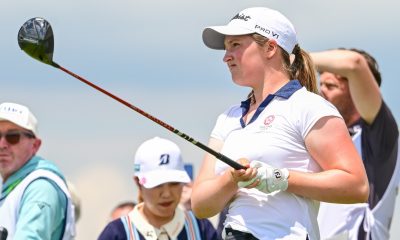



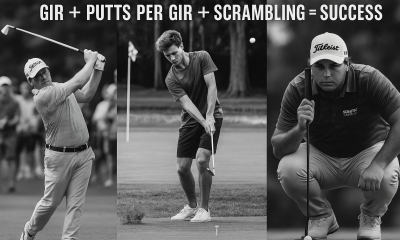



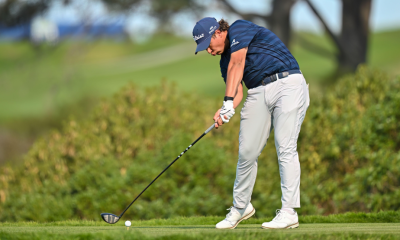

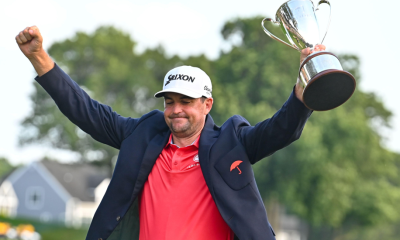









T
May 15, 2025 at 12:08 pm
Be 6 foot 3 an 240 pounds like him, that’s how
lol
Acemandrake
May 14, 2025 at 3:59 pm
Ben Hogan said he always used more club on approach shots.
That way, his swing never changed.
Consistent rhythm.